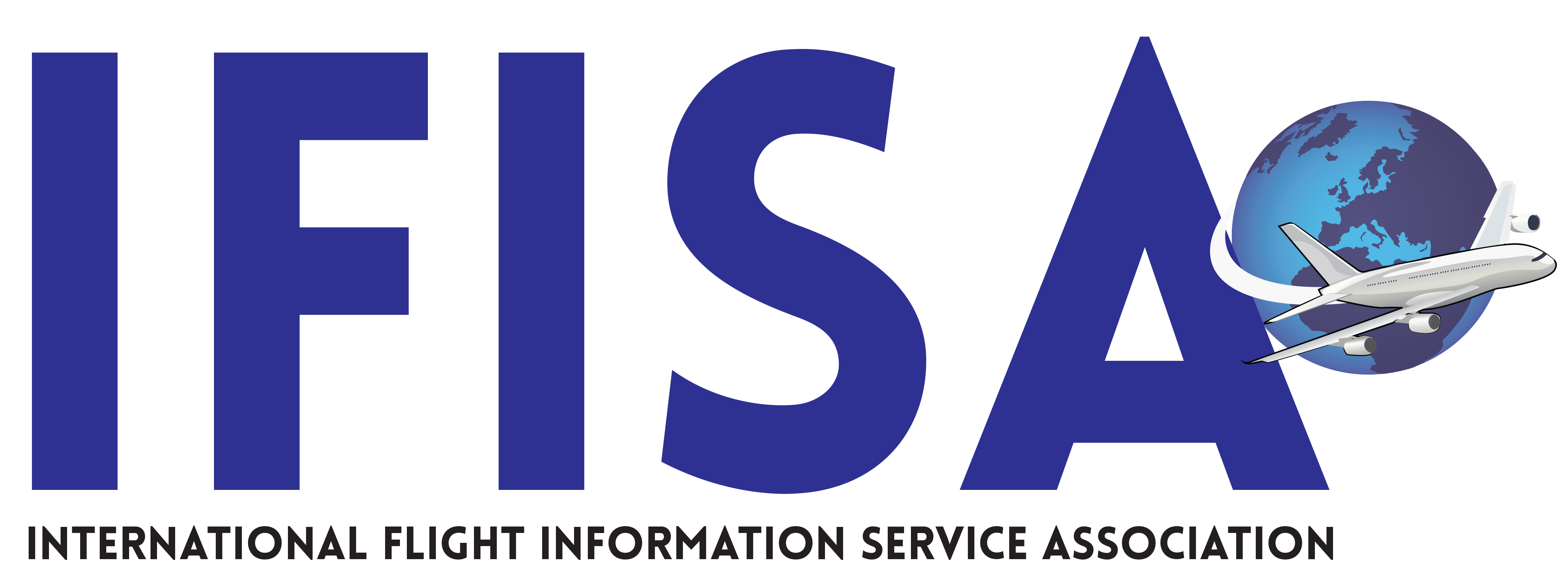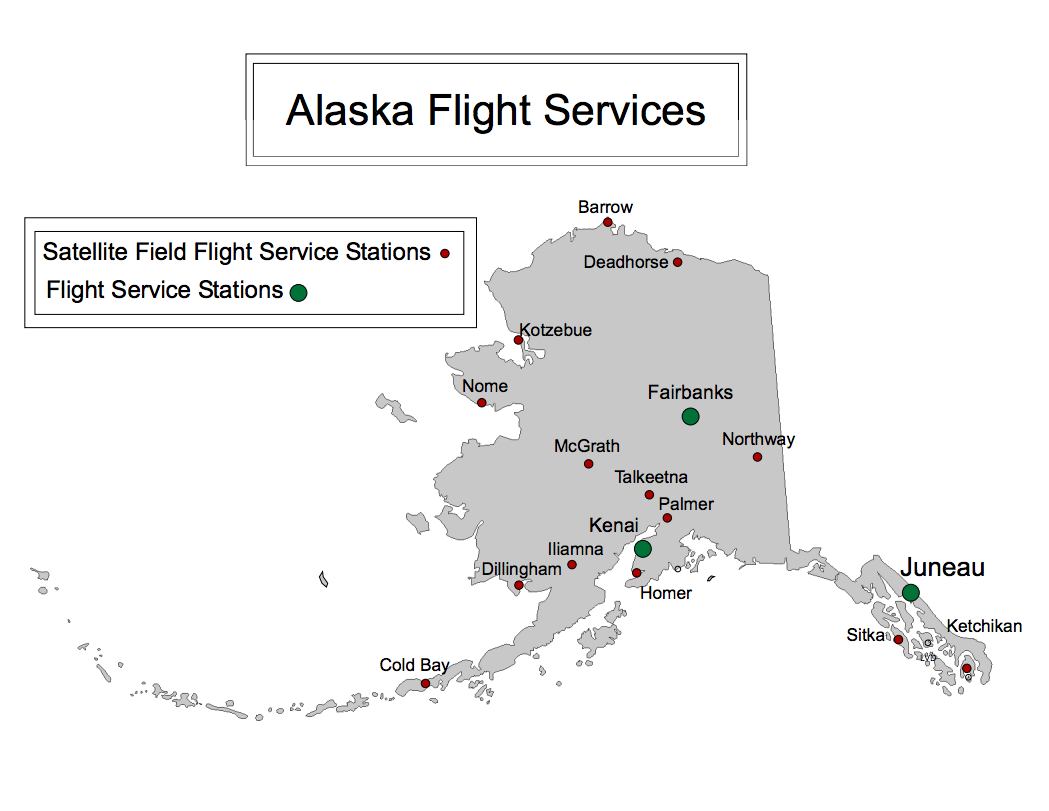About FSS in the United States
• The Federal Aviation Administration (FAA) oversees the administration of flight services.
• In Alaska, services are provided exclusively by government personnel, represented by NATCA
• In the continental United States, Puerto Rico, and Hawaii, flight service is delivered by a contract service provider
• FAA Flight Service manages the vendor contracts, costs, and customer satisfaction within the U.S. National Airspace System
FSS in the U.S. are air traffic facilities that communicate directly with pilots to conduct preflight briefings, flight plan processing, inflight advisory services, search and rescue initiation, and assistance to aircraft in emergencies.
FSS also relay air traffic control clearances, process Notices to Airmen (NOTAMs) and provide updates on aviation meteorological and aeronautical information.
All Alaska FSS facilities in the U.S. use the same equipment, but have different staffing levels and job functions.
FSS in Alaska
• Operated by a governmental agency, the FAA
• Responsible for a land area of 1.718 million km², about the size of Mongolia or Mexico
• Total flight services provided (2015): 1,584,509
• More in-flight contacts than the continental U.S. combined
• Flight service employees in Alaska: more than 150
General Traffic Numbers:
(last full year – 2015)
• Total Aircraft Contacted: 480,567
IFR: 132,065
VFR: 348,502
Pilot Weather Briefs: 104,794
Airport Advisories: 296,496
Flight Plans Filed: 199,149
• NOTAMs: 170,652
• IFR Clearances relayed: 58,698
• PIREPs: 24,009
FSS Facilities in Alaska
• 3 “Parent” facilities – area of coverage 24/7 and administrative functions
• 1 “Rotational” facility – staffing and management responsibility for five remote stations
• 11 year-round, part-time facilities
• 3 seasonal, part-time facilities – summer months only
Services Provided by Alaska FSS
• Pre-flight weather briefing
• Flight Plan notification and coordination with ATC
• En route radio services
• Airport advisory service
• Search and rescue coordination
• Notices to Airmen
Parent FSS
• Focused on preflight weather briefing
• En route radio services throughout remote areas
• Search and rescue coordination
• Administration, management, and staffing of “satellite” facilities
• When satellites are closed, parent FSS provides SVFR via LOA, or relay
• Assume responsibility for satellite FSS after hours
• Notices to Airmen (NOTAMs)
• Emergency services
• Training
Satellite FSS
• Local airport advisory service (major emphasis)
• Special VFR (SVFR) service at all but one location (PAQ)
• Relaying ATC clearances
• Pre-flight weather briefing (minor emphasis)
• Notices to Airmen (NOTAMs)
• Emergency services
Special VFR (SVFR) Operations
• Stations providing SVFR Services: 16 (Palmer FSS – no Class E Surface Area)
• 2015 SVFR services: 5,848
• Average services, 2011-2015: 6,049
FSS Procedures
While the procedures provided at Flight Service Stations are generally standard across the country, there can be great diversity between stations due to geography, airspace and types of aircraft movements.
A typical example of an FSS is a station in Class E airspace surrounded by uncontrolled airspace with a mix of commercial and general aviation traffic. The FSS coordinates with ATC regarding IFR operations.
FSS Areas
Areas surrounding some Flight Service Stations are more complex due to geographical location and a more diverse airspace structure.
In Alaska, there are coordination calls between Anchorage Center and Alaskan FSS. There are letters of agreement that allow continuous use until the center needs the airspace. Also, FSS can have multiple aircraft on visual separation.
Aerodrome Advisory Service
One of the main duties of Flight Services Specialists stationed at FSS is the provision of aerodrome advisory services. These services are delivered via voice communications and include the provision of the following information:
• Runway information – if a runway is “active” or “preferred”
• Wind direction and speed
• Altimeter – in inches of mercury
• Air and ground traffic – for aircraft inbound to, outbound from, transiting, or in the vicinity of the aerodrome
• Aerodrome conditions
• Weather conditions
• Other information such as wake turbulence, hazardous situations, parachute operations, wildlife and bird activity, laser operations, etc.
Enhanced Special Reporting Service (eSRS)
eSRS Numbers (program began in 2013):
• Pilots: 159
Aircraft: 202
Flights (all time): 8,184 thru Aug. 17, 2016
Flights (2016): 2,059 thru Aug. 17, 2016
Alerts: 29
False Alarms: 28 (96.5 percent)
FSS in the Continental U.S.
Leidos is the company that currently provides FSS service in the continental U.S. The FSS are in five locations: Prescott, Ariz., Fort Worth, Texas, Miami, Raleigh, N.C., and Ashburn, Va. They serve approximately 80,000 members of the general aviation community each week.
Answering Your Questions:
How many towers do you have?
In Alaska, there is one Special FAR Part 93 – Ketchikan International Airport Special Air Traffic Rules and Airport Traffic Patterns. It requires contact with the KTN FSS while operating in the Class E SFC Area
Total towers in the U.S.: 476; along with 21 en route centers and 197 TRACONS
In Alaska: FAA ATCT: 4; FAA Contract Towers: 4; Military Towers: 4
How many centers and how many sectors do you have?
21 centers nationwide. Anchorage Air Route Traffic Control Center covers all of Alaska.
Do you have airspace attached to this service?
16 stations with full- or part-time Class E Airspace.
How big is it?
Class E: specific radius with extensions along instrument approach paths.
How are they trained? How long time does it take? Where do you train?
Roughly four months of instruction, followed by 6-12 months of OJT. Flight Service Academy is operational at Kenai FSS; four students per class
The Future
Includes:
• Electronic Flight Strips
• Touch screen
• New voice switch
• Increased bandwidth
• Enhanced Special Reporting Service (eSRS)
• ICAO flight plans
• TALPA NOTAMs
• Improved PIREP solicitation/delivery methods

